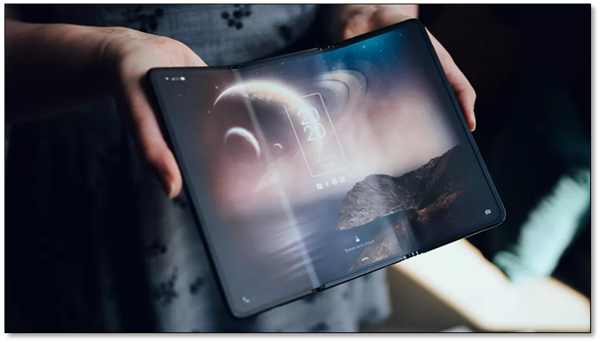Adding Foldables
The device is expected to have a form factor similar to the Samsung Galaxy Z Fold (horizontal fold) with the main screen inside (when closed) and a large external display. According to the most recent speculation the main display (foldable) is being supplied by Samsung Display (pvt) the leader in the foldable display space, and the external display is expected to be supplied by China’s BOE (200725.CH), although the size of each remains unknown, and the chipset is likely Qualcomm’s (QCOM) Snapdragon 8 Gen 1 or similar. There is a chance that the fingerprint sensor will be mounted under the display, while the camera set-up is expected to be a single selfie cam and four cameras (50, 48, 12, 8MP) for photography, all powered by a 4,600 mAh battery.
The only problem with such a device is that Vivo’s phones are most popular in China or Southeast Asia, which means that the odds of this phone winding up in the US are very small, and while foldables are a new price category for most smartphone brands, Vivo tends to offer phones in the low to mid-priced category, so we expect such a Vivo foldable will have to find an audience that is different from its usual while facing competition from Samsung in regions where it has a relatively small presence, a task that is a challenge for all foldable brands. While we have seen data as to Vivo’s share in a number of countries as high as 36.7%, those numbers must be adjusted to the population of the countries involved and then to the number of active smartphone users. Based on just population alone Vivo sells the vast majority (over 80%) of phones sold outside of China to India and Indonesia where the two best-selling smartphones are the Xiaomi Redmi 9 Power and the Xiaomi Redmi Note 10 Pro which sell for ~$211 and $290 respectively so a foldable in the $900+ price range (expected) will have limited appeal to Vivo’s existing customer base outside of China.
With a foldable expected from Google this year and the potential for an Apple foldable in 2023/2024, the foldable smartphone is looking to find its way into the mass market smartphone business, especially given the potential for premium pricing, something every smartphone brand is looking for in such a competitive market. Hopefully many of the technology issues that caused problems for consumers in the early days of foldables are now completely or almost completely solved, but we expect that by the time Apple is ready to enter the foldable market, the novelty will have worn off with consumers and the objective will be to find foldables that solve consumer problems rather than fold nicely.
Triple fold smartphones (see our note 8/31/21) give users a large image space for viewing movies or playing games, while flip type foldables bring phone sizes down to something that fits anywhere, but we always come back to a smartphone with a scrolling display, one that can be pulled out of the side of the phone to become a 6” by 12” or even 18” screen that would mimic a newspaper or magazine. There are lots of challenges in producing such a device (How do you keep the display flexible enough to be coiled but rigid enough to stay open?) and many that we have yet to think off, but while consumers have become conditioned to watching things on a small screen, foldable should be able to change that to something more akin to a display that doesn’t force you to lean forward to catch important scene movement or force cinematographers to envision what a set or exterior shot will look like on a 6” diagonal screen. Technology is supposed to be used to solve problems or at the least to make life easier, which gives foldable designers, who are barely constrained by historic convention, the ability to experiment as the technology develops. Hopefully it doesn’t wind up in the same rut as regular smartphones where more ‘stuff’ means higher prices until consumers find little value in multiple cameras or more pixels and start the inevitable price decline cycle. The field is open for foldables but using it as just another gimmick would be a true waste..



 RSS Feed
RSS Feed